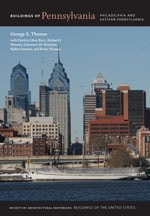
Eyre's early work is centered in the transition between the free Victorian styles and the more accurate historical revivals. This shows his dependence on sources illustrated in English magazines, including Richard Norman Shaw's Queen Anne houses with their hung tile wall surfaces and flaring chimneys, and American examples such as McKim, Mead and White's Newport Casino with its overlapping gables and wall-mounted sundial. Eyre also designed the large carriage house to the rear and returned again and again to update and enlarge the house from its origins as a rather modest cottage to a significant mansion with secondary wing. After World War II, it was adapted into a nursing home; in the 1980s, it was imaginatively adapted into half-a-dozen condominiums by local developer Richard Snowden and local architect Greg Woodring.














